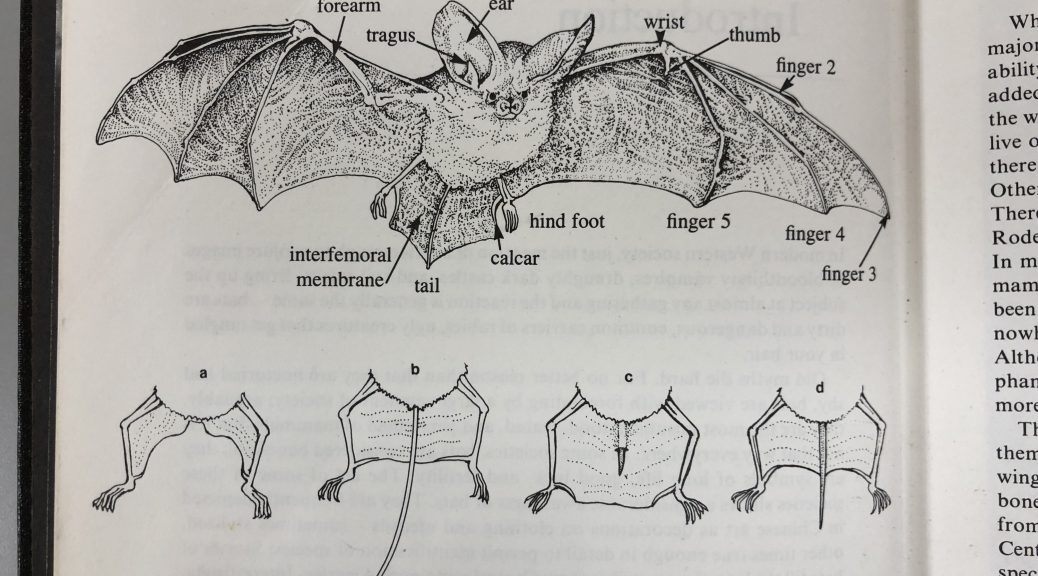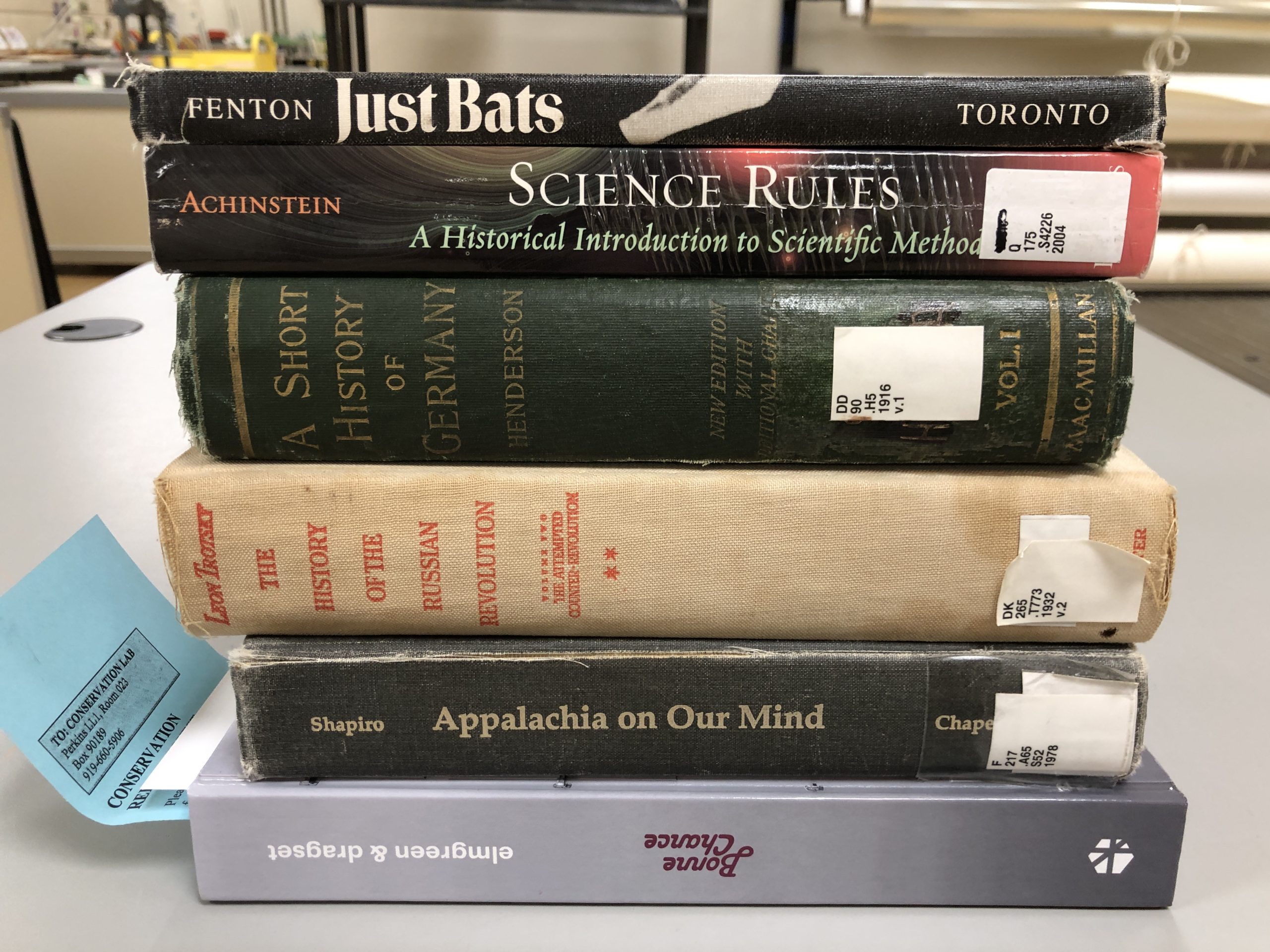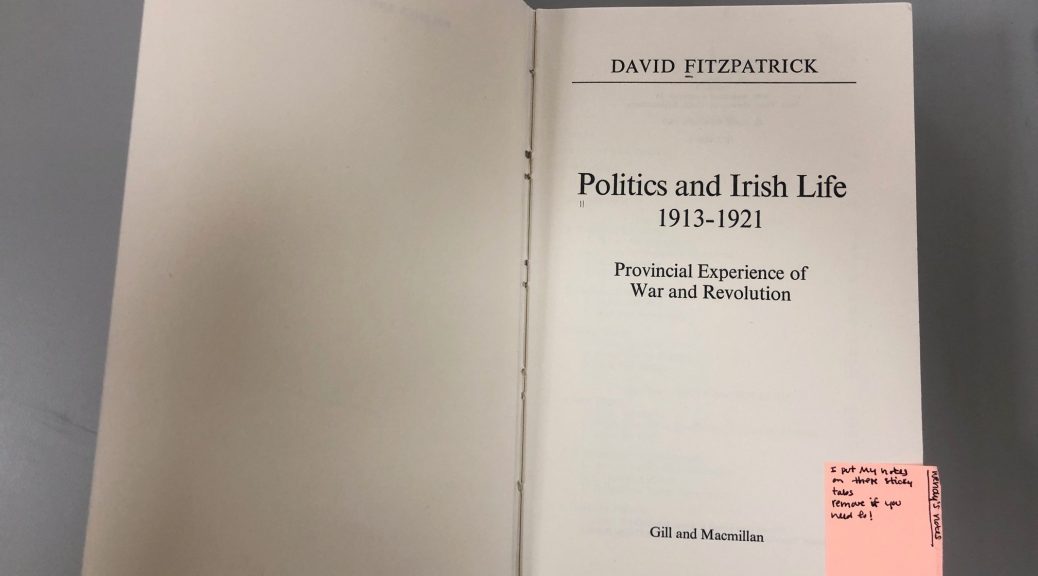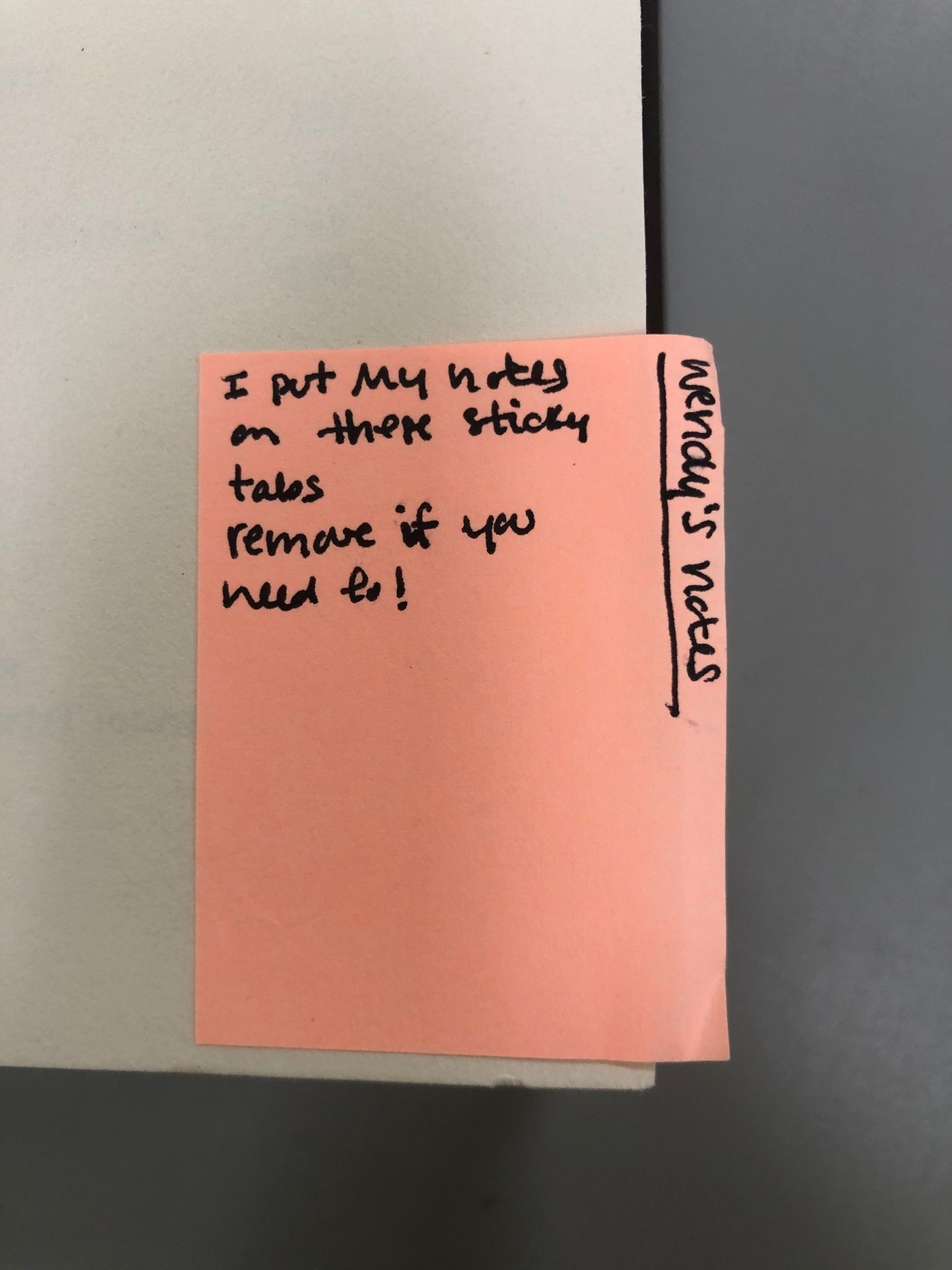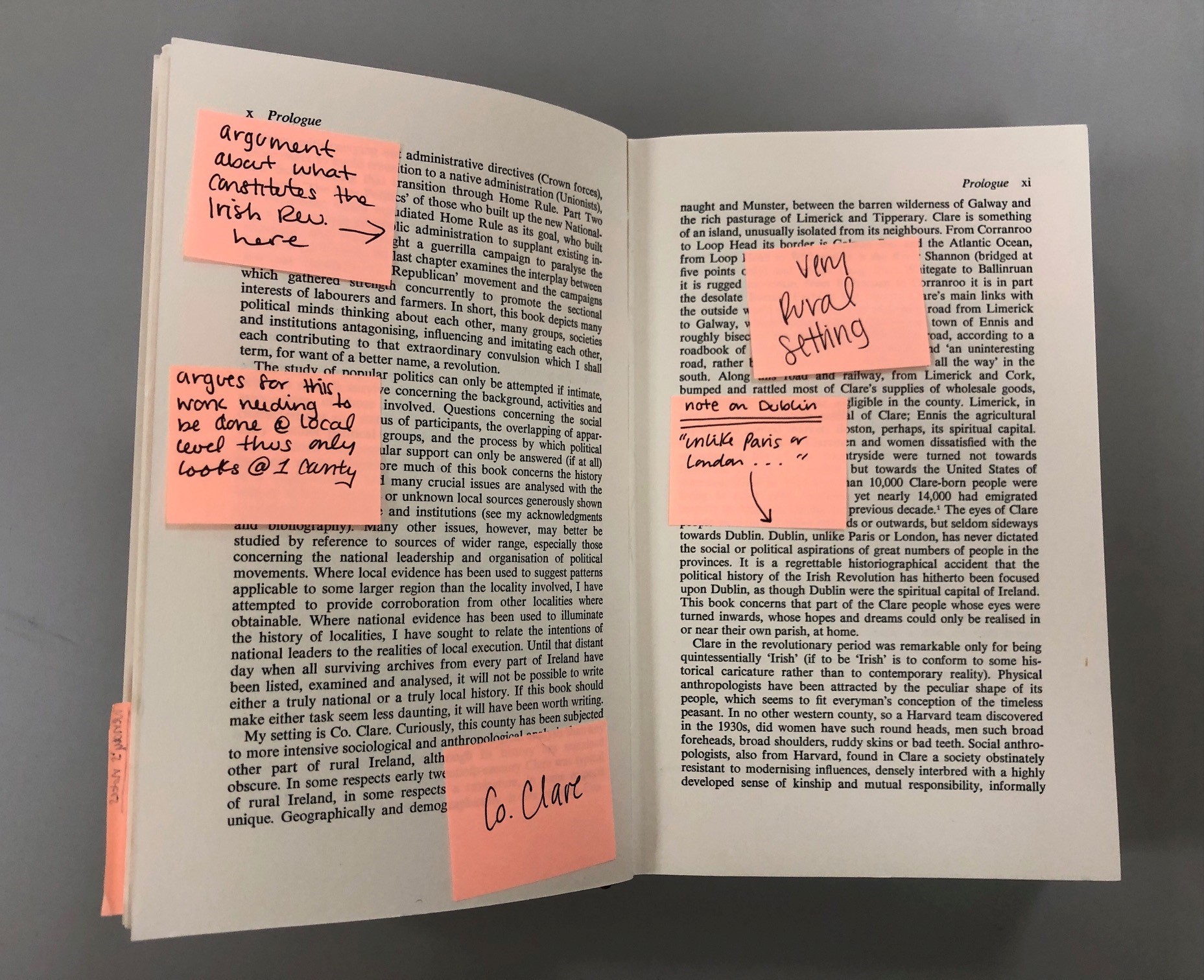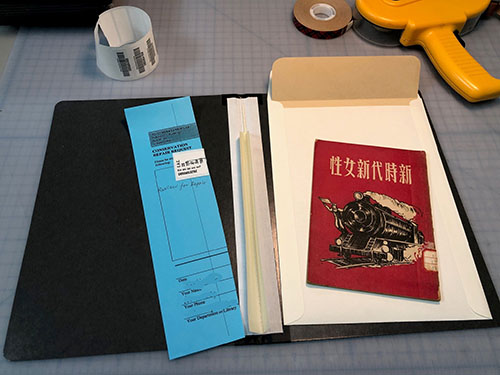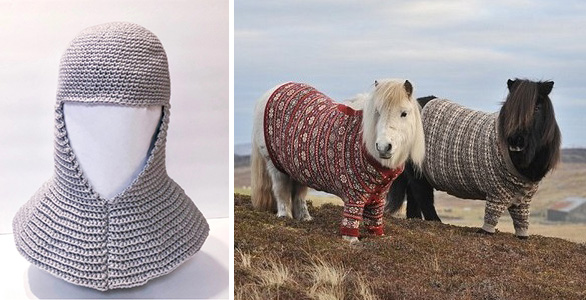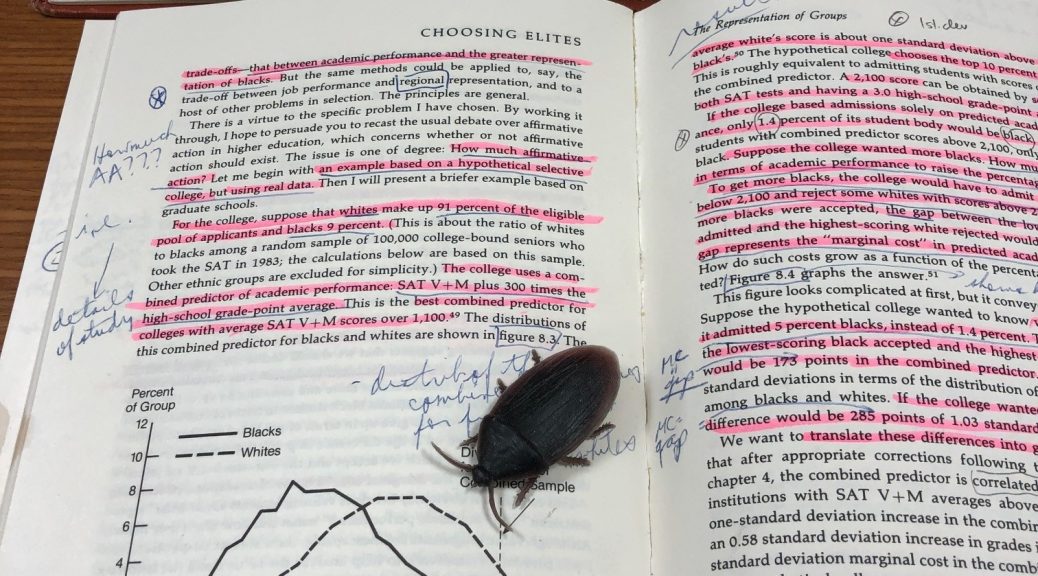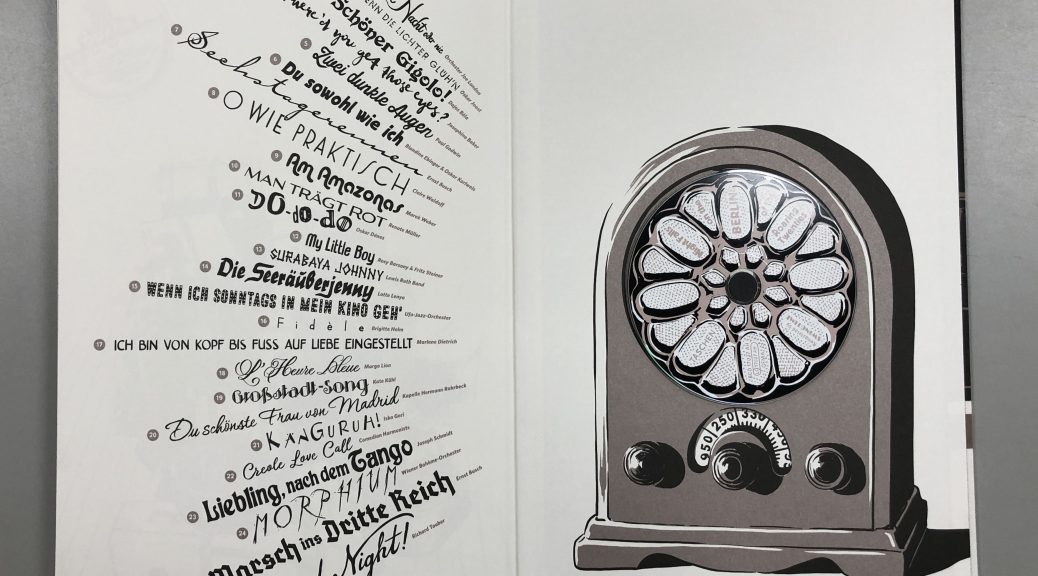We love getting new equipment for our work areas. In the past month, we have upgraded to sit-stand tables for two shared work areas. We are thrilled to present our new “Conservation Station” at Smith Warehouse. This space allows our shelf preparation work to be co-located with acquisitions and cataloging. By moving these workflows to Smith, we anticipate a quicker turnaround from shelf-prep to shelf. This table was a hand-me-down from another department, and we are thrilled to have it.
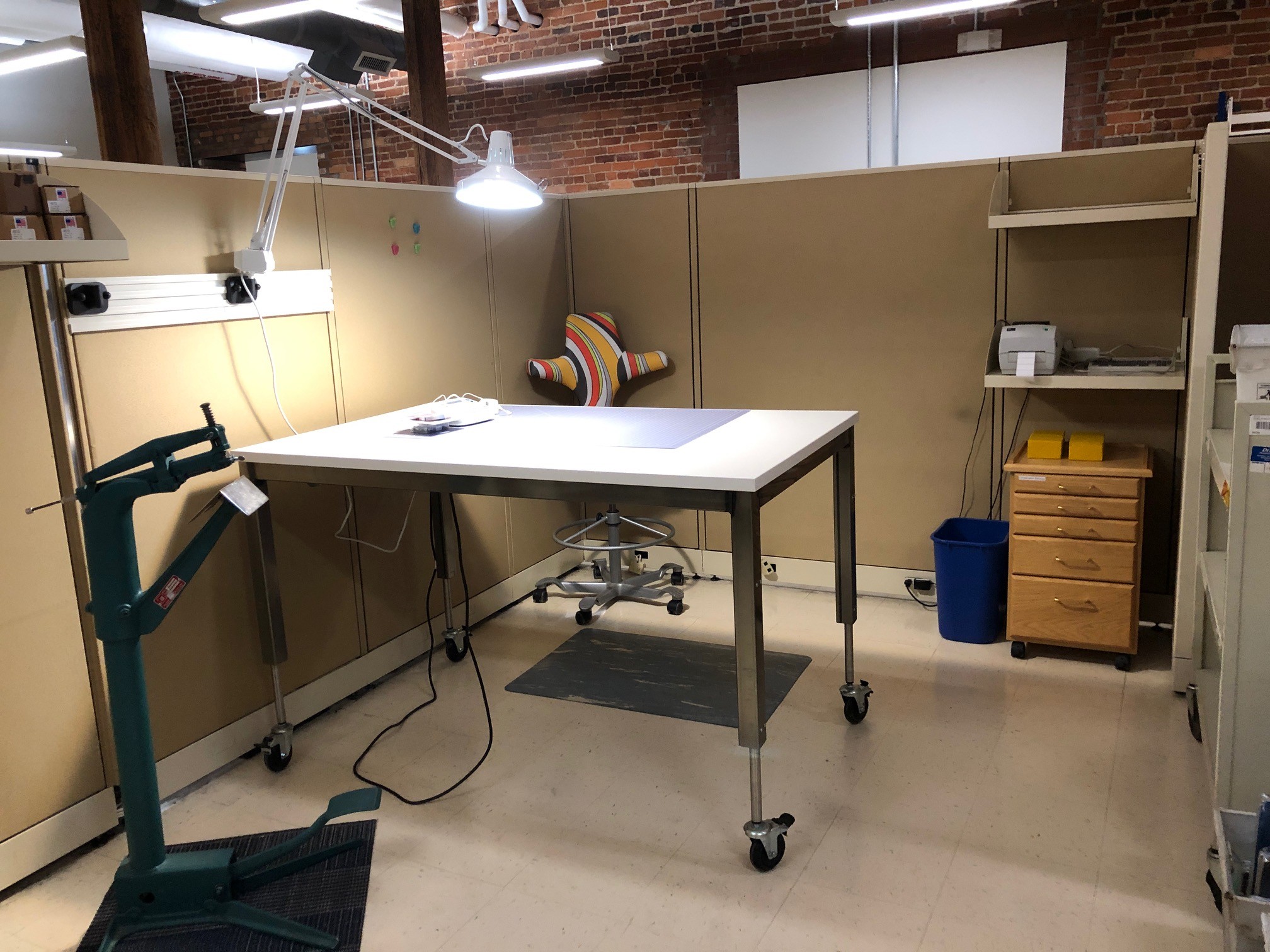
Over in the conservation lab we have upgraded from an older desk-height table to an Uplift sit-to-stand table. This table is in the “dirty room” where we do all of our solvent and mold removal work. The desk is chair-height and difficult to work on for any length of time.
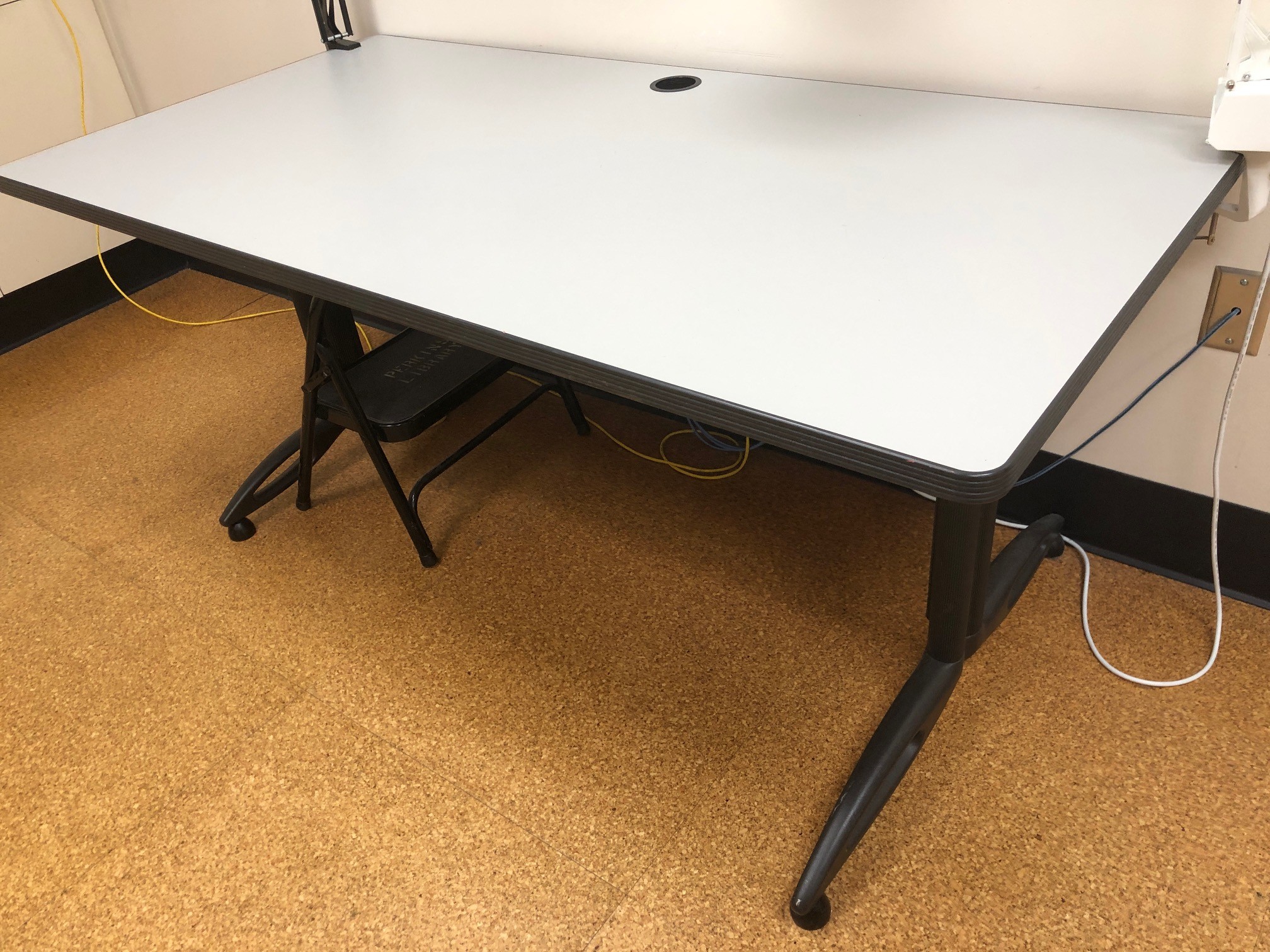
Our new table has a lot of “bells and whistles” the old table does not. It can adjust from 25″ to 51″ in height, it has locking wheels, and a solid top. We can move this table into the lab when we need added table space, something that was impossible with the old table.
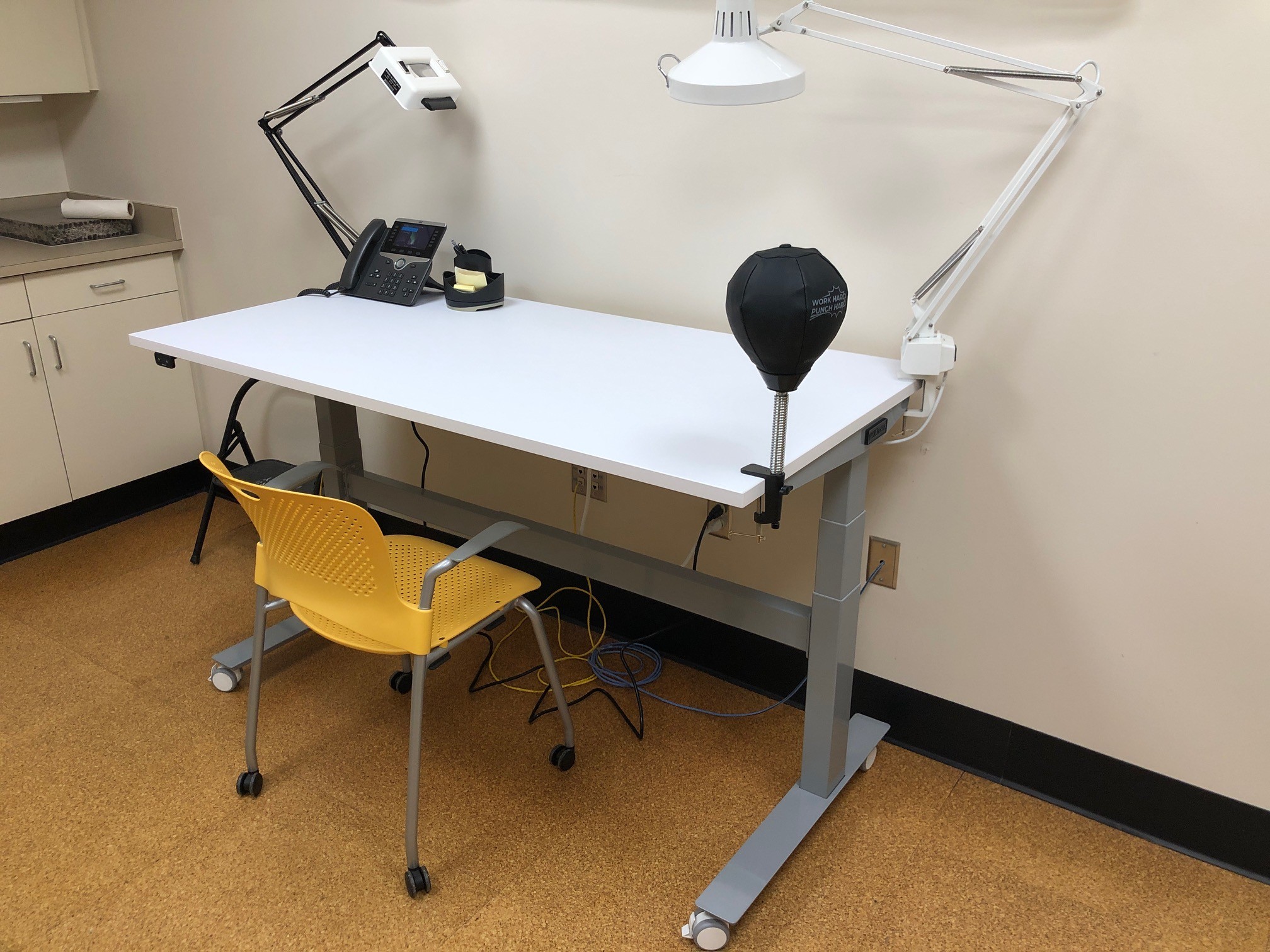
We really like the Uplift brand desk. The best part is the desks come with the choice of free accessories. We chose the clamp-on punching bag. Yes, it does work and yes, it is fun! Thanks to our generous Adopt-a-Book donors, we were able to purchase this table and have it customized to fit our needs.
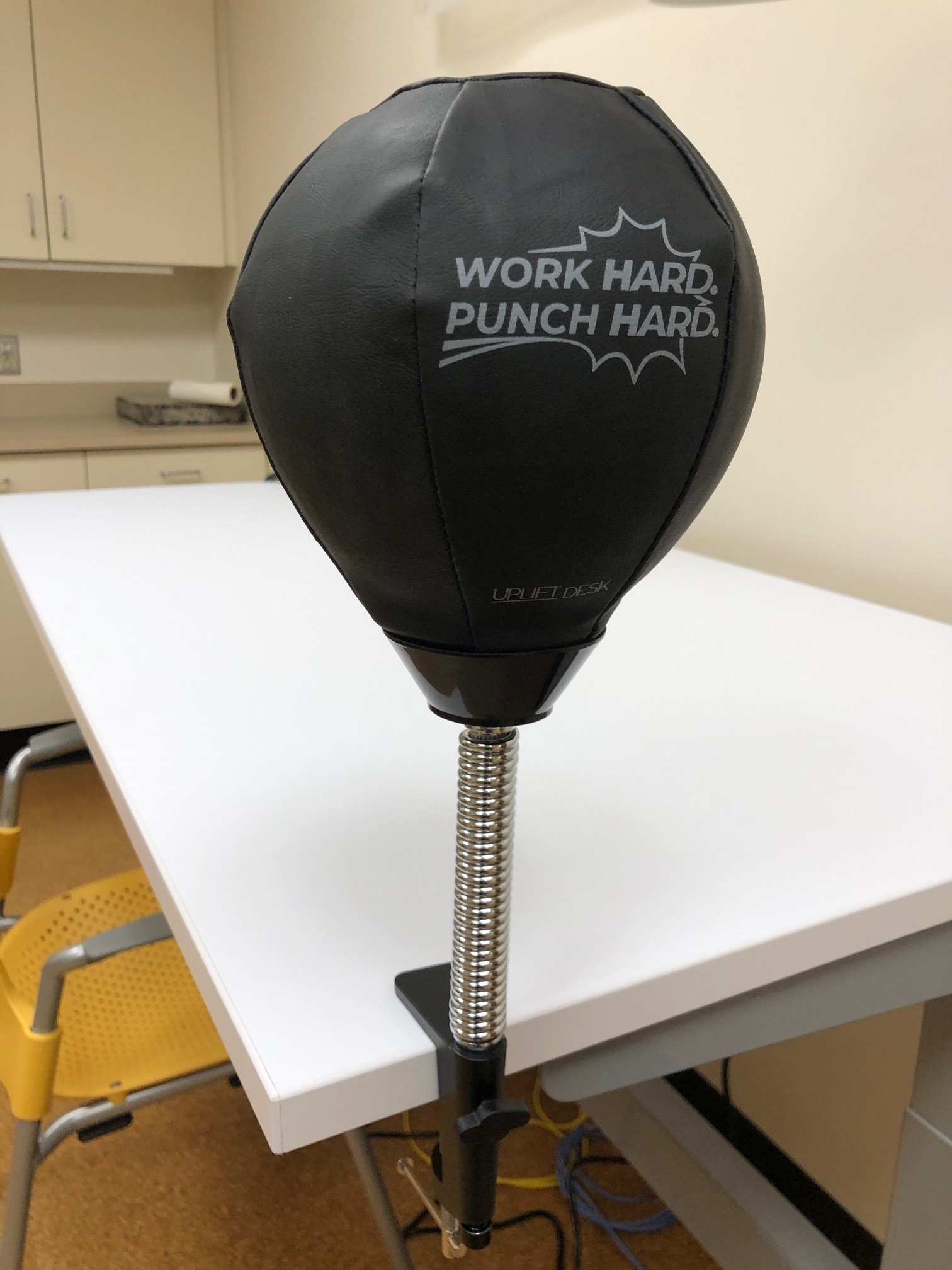
Both tables improve the ergonomics of our work. They also provide flexible space options for when things get really big.


